Binders, often called gums, are like the secret glue that brings gluten-free baking to life! They replace the magic of gluten, helping everything stick together beautifully. How to Use Binders in gluten free baking, is sixth in a 12-part series. Once you learn the role they play in baking, and when to use them you'll be cookin!
The goal with this series is to share just enough information to help you learn the properties and best uses for many flours. This in turn will improve your baking, and increase your confidence when making substitutions. I hope that will inspire you to try new recipes.
Jump to:
- What Are Binders for Gluten Free Baking?
- Do All Gluten Free Recipes Need a Binder?
- What is Gluten and What Does It Do?
- How Do Binders Work?
- Xanthan Gum
- Guar Gum
- Psyllium Husks
- Resources for Gluten Free Cooks
- Watch How To Use Binders on YouTube
- Where To Buy Binders
- How To Add Binders in Gluten Free Baking
- Recipes Using Xanthan Gum
- Recipes Using Psyllium Husks
- When Not To Use a Binder in Gluten Free Cooking
- When NOT to use Binders in gluten free cooking
- How To Use Gluten Free Flour: A 12-Part Series
What Are Binders for Gluten Free Baking?
The three most commonly used binders in gluten free recipes are:
- Xanthan gum
- Guar gum
- Psyllium husk or psyllium husk powder
You don’t need to understand the science of binders to use them, but a little bit of knowledge helps prevent your baking from crumbling in your hand. Who hasn't experienced that, right?
From muffins to sliced bread, binders are the glue that keeps everything together and a little goes a long way. Binders will help you get the kind of results you're looking for.
Do All Gluten Free Recipes Need a Binder?
No. At the end of this post I've included when not to use a binder for best results, as well as the kind of recipes that just don't need a binder.
Although binders do play an important role in baking some people find they cannot tolerate gums. Another reminder that you need to know all the ingredients you are eat to be symptom free as much as possible.
What is Gluten and What Does It Do?
The acronym B.R.O.W. helps when you're new to gluten free. It stands for barley, rye, (oats) and wheat; the ingredients people first learn about that need to be avoided. Oats are mainly avoided because they grow beside wheat fields but that's another topic altogether. (Learn more in this post on safe gluten free oats.)
Gluten is a protein naturally found in barley, rye and wheat. The main protein strands in wheat flour are glutenin and gliadin. They wrap themselves around starch granules and when water is added these strands unwind and connect to form a network called gluten. This network can trap air to make light, airy baked goods, and has a stretchy quality allowing dough to be shaped into anything and even tossed in the air.
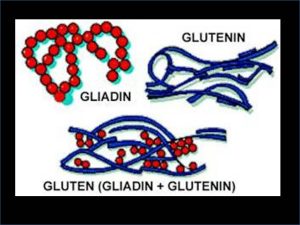
How Do Binders Work?
In gluten free baking we need lots of help to create make up for the missing gluten. The protein in different gluten free flours helps, but many gluten free flour blends are high in starch and need a binder to give the results you want.
Binders works in slightly different ways to help create structure so let's look at each one separately.
Xanthan Gum
Properties
- Xanthan gum is commercially used as a thickener and stabilizer in ingredients like toothpaste and salad dressing.
- Used to create structure and extend the freshness of gluten free baking.
- It has a shelf life and is best stored in the fridge or freezer. I keep a small spice bottle of xanthan gum in the cupboard with my baking supplies and store the bag in the freezer.
- Xanthan gum may seem expensive but it is used in small amounts and will last a long time.
Best Uses
- All gluten free baked goods.
- Guar gum is a reasonable substitute if needed.
Cons
- Not everyone can tolerate xanthan gum and some people have a happier tummy when they bake completely 'gum free'.
- Some people notice a metallic taste in baking with xanthan gum. I don't taste that so I use it in many of my recipes.
Guar Gum
Properties
- Made from guar seeds, this powder is high in fibre and is used as a laxative.
- Like xanthan gum it adds structure to baked goods.
- Imparts a slightly starchy texture to baked goods.
- According to America’s Test Kitchen cookbook, How Can It Be Gluten Free, "guar gum does not perform as well as xanthan gum". They do more extensive testing than any home cook could ever do so I’m happy to follow their recommendation. I learned this early in my gluten free baking so I have never tried guar gum.
Best Uses
- All gluten free baked goods.
Psyllium Husks
Properties
- Psyllium is a major component in laxatives. It has a high viscosity so is able to bind water more effectively than xanthan gum.
- It is sold as psyllium husks or psyllium husk powder. The husks appear like tiny flakes and are preferred for gluten free baking.
- Psyllium creates a sturdy network with the proteins in gluten free flours and adds a wheat flavour to baking that works well in yeast breads.
- The wheat flavour in not desirable in baked goods like muffins and cookies.
- A larger amount is required (compared to a tiny amount of xanthan gum) and for this reason it is more suited to use in yeast breads.
Best Uses
- Yeast breads and pizza dough.
- My biscuit style Cinnamon Rolls which is the basic recipe I vary to make Cheese Biscuits, a Biscuit Pizza and even Strawberry Shortcake.
Resources for Gluten Free Cooks
If you're interested in the science, and an all around excellent resource, I recommend any of the gluten free cookbooks from America's Test Kitchen. They've got a lifetime of learning in them and lots of recipes too.
- The How Can It Be Gluten Free Cookbook
- Volume 2 The How Can It Be Gluten Free Cookbook
- In 2020 they published this book that includes 75 dairy free recipes, How Can It Be Gluten Free Collection; 350 Groundbreaking Recipes For All Your Favourites.
Watch How To Use Binders on YouTube
Where To Buy Binders
- Xanthan gum, guar gum and psyllium husk powder can all be found at stores that sell gluten free flour. Health food stores typically have more options.
- Both Bob's Red Mill and Judee's sell xanthan gum and guar gum online.
- Healthworks and Viva Naturals sell psyllium husk powder online.
- Bags of psyllium husk powder are typically quite large. If that is why you've avoided buying it find someone local to share the amount with. If you're in Calgary where I live, each month when I sell cookie dough I package up small amounts of ingredients for people who want to try it without the big purchase. You can find more details about that on the CLASS CALENDAR.
How To Add Binders in Gluten Free Baking
Adding the exact amount of xanthan gum needed to each recipe will yield the best results. For this reason a gluten free flour blend, homemade or store bought, is best without a binder.
More importantly, read the ingredient list on the flour blend you are using so you know if there is a binder in it. To much binder can make baked good gummy.
If your blend doesn't have a binder a good rule of thumb is to add ¼ teaspoon of xanthan gum for every 1 cup of gluten free flour. This changes depending on the type of recipe you're making so it's simply a guide.
Recipes Using Xanthan Gum
Although I have tried several muffin recipes without a binder, I like the results better when I use xanthan gum. For that reason the majority of my baking includes it. Psyllium husk powder in less of them but it was a worthwhile addition to my pantry.
As you bake more and experiment with yeast recipes you'll want to use psyllium husk powder.
Here are 30+ recipes that have a binder in them.
Pancakes, Waffles and Muffins
- Yogurt Pancakes, Pancake Bake and Pigs In A Blanket
- Waffles
- All my muffins: Gluten Free Muffins: A Recipe Roundup
- Buttermilk Biscuits made with individual flours/starches
Quick Breads, Cakes and Desserts
- Angel Food Cake, Australian Lamingtons and Chocolate Cupcakes
- Pumpkin Date Cake and Rhubarb Coffee Cake
- Cranberry Orange Scones
Pastry
- Flaky Pastry, the recipe I use to make Pumpkin Pie, Cherry Hand Pies, Lemon Meringue Pie, Banana Cream Pie and any pie you can think of. (Savoury ones below.)
- Glazed Fresh Fruit Pizza with a cookie dough type base.
- Tart Pastry 2.0 and my original version, Tart Crust 1.0
Cookies
- A Roundup of Gluten Free Cookies including:
- Sugar Cookies
- Gingerbread Cookies
- Iced Pumpkin Spice Cookies
- Pumpkin Chocolate Chip Cookies
- Thumbprint Cookies and more.
Savoury Foods
- The same Flaky Pastry from above to make savoury recipes like quiche, Turkey Pot Pie and the French Canadian meat pie called Tourtiere.
- Yorkshire pudding
- Soft Dinner Rolls
- Chinese Onion Bread
- Vegan Bagels
Recipes Using Psyllium Husks
- Variations on one recipe made with my EGFG flour blend: Cheese Biscuits, Cinnamon Rolls and Strawberry Shortcake
- Pizza Dough (thin crust)
When Not To Use a Binder in Gluten Free Cooking
Gluten free bakers need to keep experimenting with everything they make. Some muffins and even cake recipes will work without a binder. Even though most of my recipes use a binder I do not use one in these recipes.
- Mug cakes
- Crepes and a crepe cake
- Savoury buckwheat crepes
- Baking with quinoa flour; Chocolate Chip Cookie Pizza and Peanut Butter Cookies with Quinoa Flour
When NOT to use Binders in gluten free cooking
There are the two things gluten free cooks need to know about binders.
- You do not need a binder to make crispy breading or light, airy batter. My batter recipe uses brown rice flour, cornstarch and club soda to achieve the lightness I want. I use this batter to make Chinese Chicken Balls, Battered Fish for fish & chips or Fish Tacos. Try it to make tempura too but skip the second dipping step.
- Gluten free flour blends do not give the best results for breading or batter. The high starch content of most flour blends creates a tough batter. My breading recipes vary so look at these recipes to see some options: Breaded Pork Chops and Breaded Chicken (same recipe made with cornstarch and gluten free cornflakes), Baked Sesame Chicken and calamari.
Happy baking and cooking!
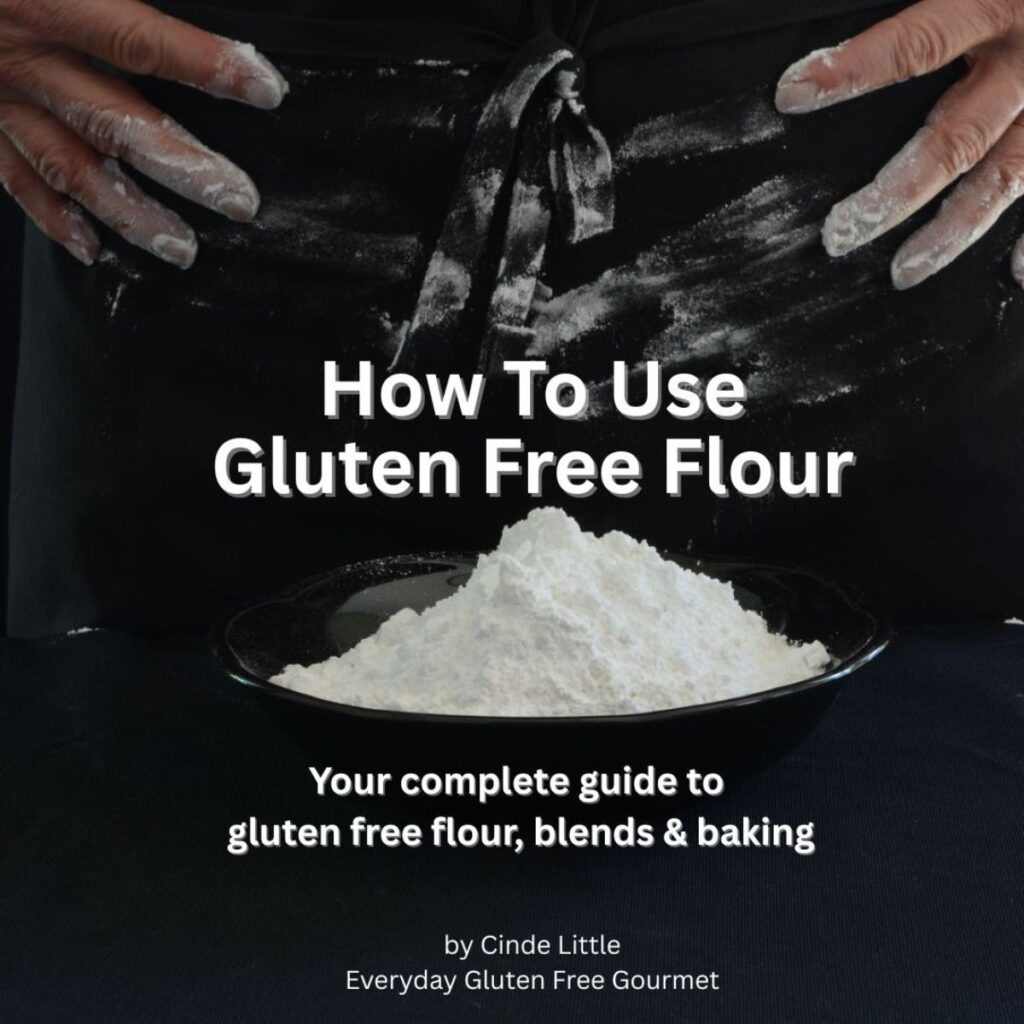
Learn the best uses for many different gluten free flours to improve your coking! This ebook gives you the essential tips for more than 20 flours with recipe suggestions for each one. It's all in one place with no ads. This is an ebook you'll actually open.
How To Use Gluten Free Flour: A 12-Part Series
This series is intended to provide a basic overview of ingredients for everyday home cooks, both new and experienced.
- How To Use Rice Flour in Gluten Free Baking
- How To Use Starch
- How To Use Millet Flour and Sorghum Flour
- How To Use Corn Flour, Cornmeal and Masa Harina
- How To Use Almond Flour and Quinoa Flour
- How To Use Binders in Gluten Free Baking
- How To Use Chickpea Flour
- How To Use Teff Flour
- How To Use Buckwheat Flour
- How To Use Coconut Flour
- How To Use Oat Flour
- How To Use A Gluten Free Flour Blend
__________________________________________________________________________
New here? I've got the help you need to learn to make gluten free food the whole family wants to eat. Subscribe and get your free resource, 29 Tips for GF flour.
🎉 I made it into the Top 100 Gluten Free Blogs for 2025 and the Top 40 Gourmet Food Blogs. Learn all the ways I can help you by visiting this page, Everyday Gluten Free Gourmet.
_________________________________________________________________________


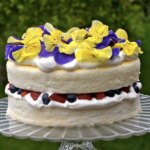
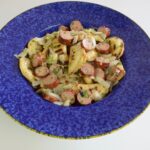

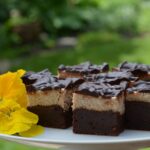
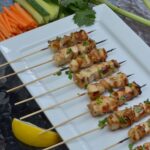
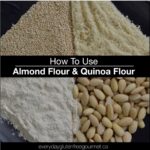
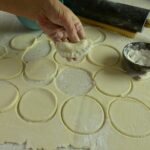
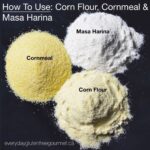

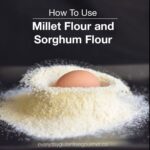
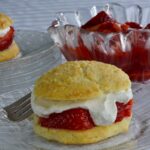
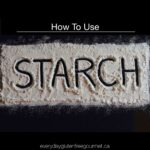
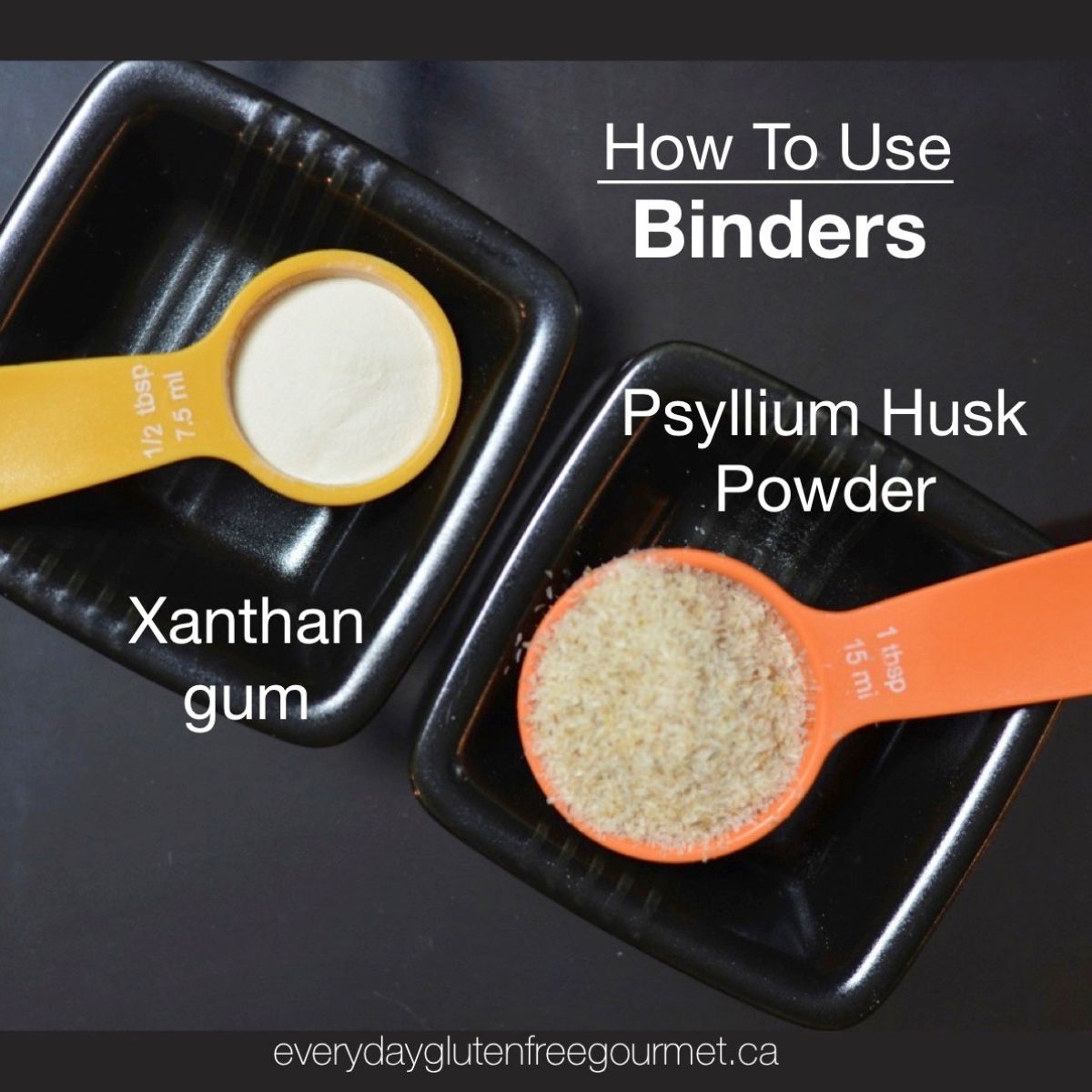

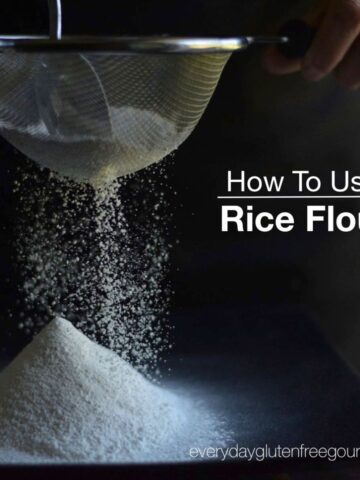
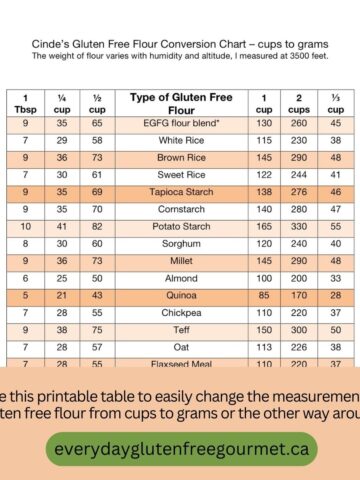

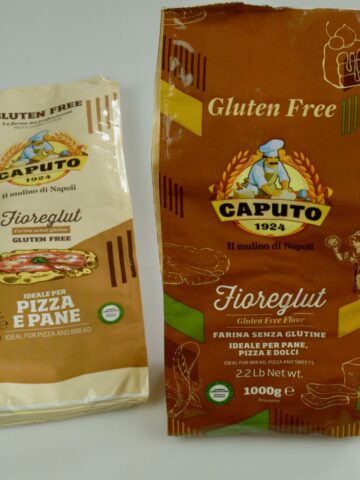
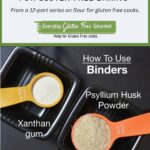
Jamila
Please suggest substitute for xanthan gum/guargum/husk.. i dont have all 3 of them.. n i need to bake urgently.. please help
Cinde Little
Hi Jamila. I’m not sure what you’re baking but you can skip a binder in muffins. They wouldn’t hold together as well but the taste will be the same. For a cake you definitely need a binder. My Chocolate Quinoa Cake is made with no flour or binder, it’s great as a cake or cupcakes. I hope that helps. Happy baking!